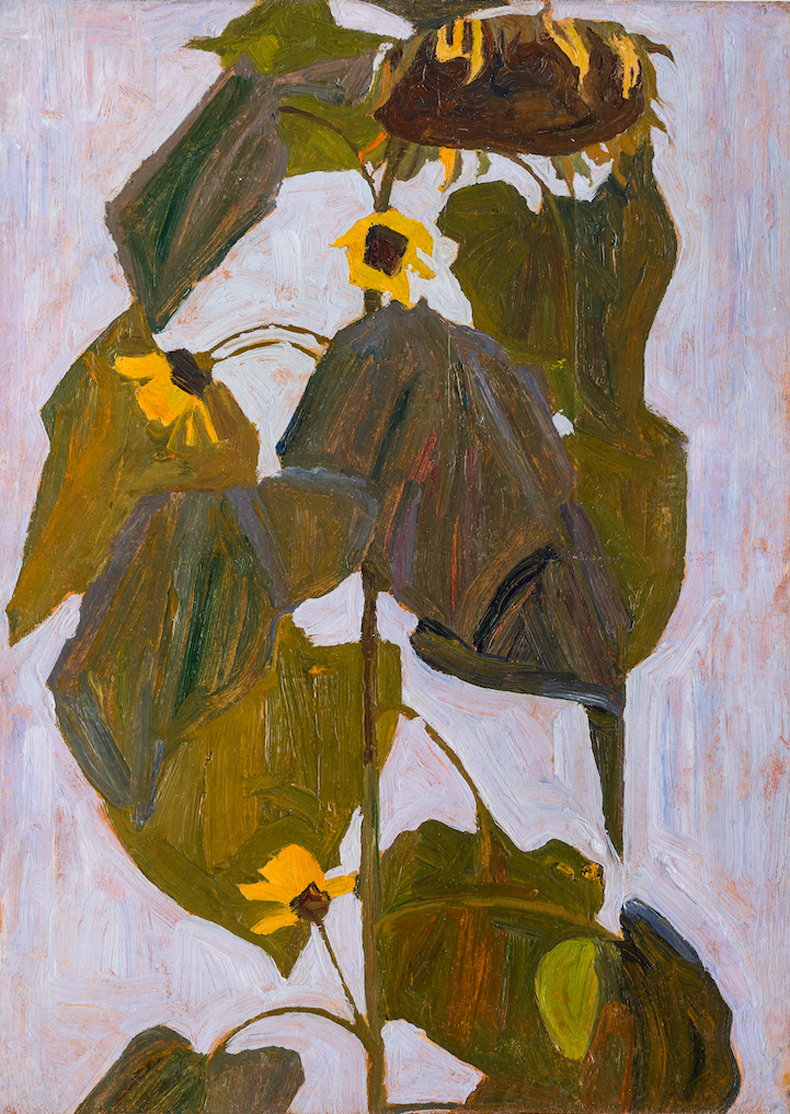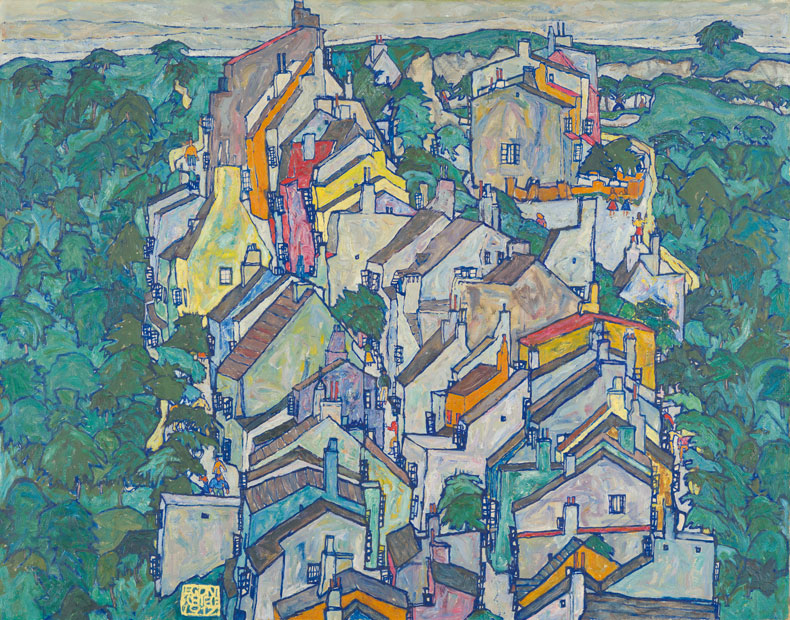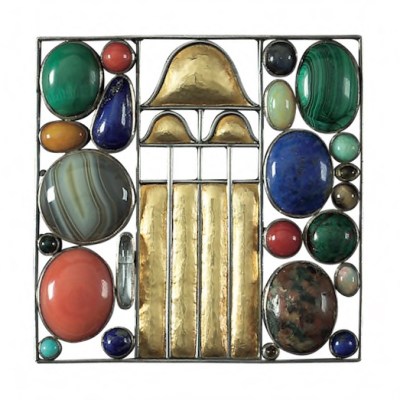Egon Schiele had a modern face. The art critic Arthur Roessler, a friend and patron, recorded it so: ‘Even in the presence of well-known men of imposing appearance, Schiele’s unusual looks stood out…. The features of his face were unusually fixed in an earnest, almost sad expression, as though caused by pains which made him weep inwardly.’ His look was distinctive but by today’s standards unremarkable. Pick any of Schiele’s portraits and you will find there the malaise of modern life, either in his contorted, miserable-looking lovers or the sterile, frank likeness of Dr Erwin von Graff, whose portrait was allegedly rendered as payment for an abortion needed by a friend of Schiele’s. Even an outline of the painter’s life – that of a middle-class oddball with no formal training who would spend most of his life travelling with a female companion to whom he was not married – suggests a certain alienation.
When we think of Schiele, it is the portraits that first come to mind. Typically, his subjects are depicted against a largely blank white canvas, sometimes accompanied by the suggestion of a bed sheet; this airless quality can make the paintings feel removed from the realm of the organic, despite their implicitly sexual nature. But an exhibition at the Neue Galerie in New York reminds us that from early in his career he was fascinated (and repulsed) by the natural world, and disdained city life almost from the moment he moved to Vienna. ‘Egon Schiele: Living Landscapes’ argues that Schiele’s less familiar but no less accomplished landscape and townscape paintings contain just as much psychological complexity and melancholy as his portraiture.
Sunflower I (1908), Egon Schiele. Landessammlungen Niederösterreich, St. Pölten

Early in the galleries we are introduced to the motif of the dead sunflower, craggy and bent at the neck. It is, in its way, obviously a portrait. Such imagery captured Schiele’s imagination on multiple occasions: in Four Trees (1917), which is not in the exhibition, three of the subjects bloom fulsomely while the other sheds its petals, exposing the hard, bare branches below. Denuded trees would recur in his work, a variation on the corpse-like, awkward bodies of his portraits; the sinuous branches that stretch across dull grey canvas register as a kind of spent sexuality.
By not including some of these nature paintings, the show misses a step in presenting an under-appreciated aspect of Schiele’s oeuvre, but the works that are on display are revealing in their own right: they exist in the space between sensitive landscape painting and the detached psychological realism of portraiture. The exhibition gives us an Egon Schiele more generous than the man who glowers out from confrontational post-coital scenes – a painter thoughtfully and tenderly engaged with the world far from the Viennese garret where his models would sit for him.
River Landscape with Two Trees (1913), Egon Schiele. Private collection. Photo: Alex Jamison

What comes to the fore in this show is Schiele’s fraught attitude toward both city life and nature, and his fascination with the small cities outside Vienna, such as Stein and Krumeau, where he would travel with his lover Walburga Neuzil (until he married Edith Harms in 1915, three years before they would both die in their twenties of Spanish flu). The centrepieces of the main gallery are paintings in which nature confronts the small city. In Houses by the River II (The Old City II) (1914), a monolithic grey river flows steadily at the feet of several structures crowded on top of one another. In Yellow Town (also 1914), a congested city centre, sallow like the skin of many of Schiele’s sitters, gets only a gasp of breath towards the back, where the city gate lets us out into the green rolling hills. In Town among Greenery (The Old City III) (1917), a crowded rural centre has forest encroaching on both sides and, through the gate to the city in the back left, an exit on to the rolling hills. There are rudimentary human figures in the streets, but their cartoonish aspect gives the scene a jejune, even insincere quality.
The perspectives of these cityscapes are slightly strange, as if we are beholding them from a nearby clocktower. A small postcard on display, in which we can see in pencil Schiele’s blocking out of the town pictured, offers an answer: we’re looking from a postcard’s-eye view. He’s painting from the reference of that most pedestrian of souvenirs, his trenchant cool brought down to earth. Schiele’s architectural sketches, which also accompany the large canvases, are precise and attentive, and indicative of an innate technical skill that he lacked the means to cultivate academically, unlike wealthier contemporaries such as Klimt. In two paintings we move away from the residential to look briefly at infrastructure. The Bridge (1913) is one of the more beguiling works on display, the structure of the title rendered in Schiele’s careful architectural mode, and to the right, the coy stern of a boat, decorative and bright red (a common colour denoting sexuality in his portraits), pulling into the frame on another wide grey river, suggesting human activity but never quite delivering it.
Houses by the River II (The Old City II) (1914), Egon Schiele. Museo Nacional Thyssen-Bornemisza, Madrid

These paintings are devoid of human faces and forms, but by leaving behind his human subjects, Schiele the artist begins to seem more human. His portraiture style is so distinctive that its sense of ennui can overwhelm our conception of him as both man and artist; in discovering Schiele’s fascination with the world beyond the urban demimonde and the studio where models undressed, one senses a warmer, more peaceful psyche. The abundant pattern of leaves making up the forest that frames the city, or the large swathe of grey river under a bridge, are melancholy but without anxiety.
In the opposite corner of the gallery hangs a completely unexpected scene, The Vision of St Hubert (1916). Almost Pre-Raphaelite in subject and style, Saint Hubert faces away from us, brought to his knees by the vision of a white stag, a delicate cross floating above its head. How strikingly different in tone from everything else, and perhaps a precursor of what could have come next – a move beyond the misanthropy, the detestation of embodiment, so evident in his painting up until that point. Schiele’s development as a painter is satisfying to trace: his late works are accomplished realisations of what the early work set out to do. (One need not look further than 1917’s The Embrace, by which point Schiele has moved beyond the sallow and wretched couples to find in human intimacy something quieter and more beautiful.) He would be invited to show his work at the Viennese Secession’s 49th Exhibition in 1918, the year of his death.
Roessler’s description of Schiele continues: ‘His laconic, aphoristic way of speaking created, in keeping with the way he looked, the impression of an inner nobility that seemed the more convincing because it was obviously natural and in no way feigned.’ One leaves the Neue Galerie with the sense of someone who, for all the cynicism implied in his work, could be both stately and earnest, sensitive to the modern condition and moved to capture it in and out of the city.
Town among Greenery (The Old City III) (1917), Egon Schiele. Neue Galerie, New York

‘Egon Schiele: Living Landscapes’ is at the Neue Galerie, New York, until 13 January 2025.



